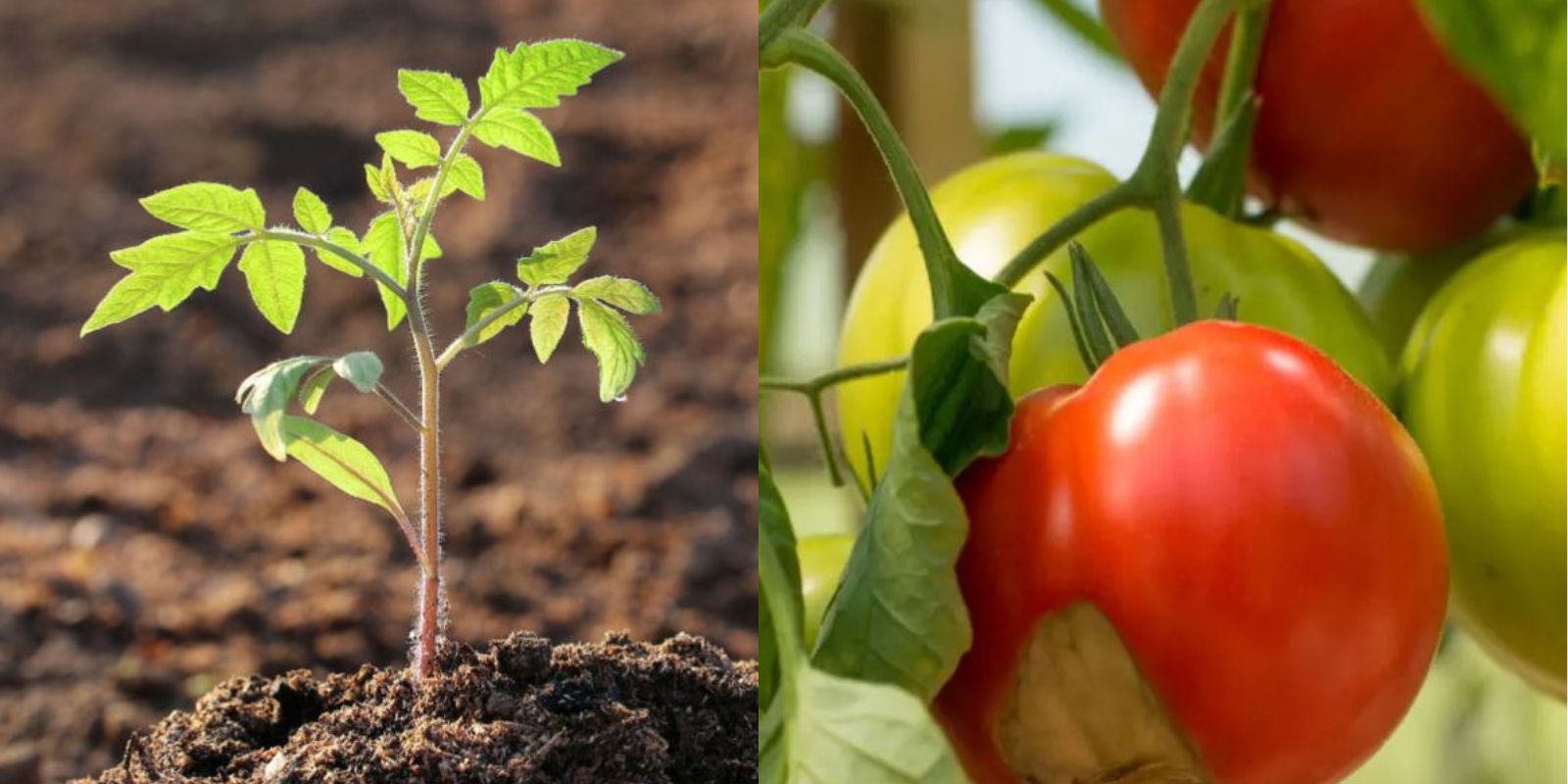Introduction
Growing tomatoes at home is a gratifying experience, offering both the pleasure of cultivating your own produce and the benefit of enjoying fresh, ripe tomatoes. Whether you have a small balcony or a large garden, there are proven strategies to accelerate tomato growth and maximize your harvest. This guide will walk you through the essential steps to grow tomatoes quickly and efficiently, ensuring you get the most out of your gardening efforts.
1. Choose the Right Variety
The journey to a successful tomato harvest begins with selecting the right variety. Fast-growing tomatoes like cherry or early-season varieties are ideal for achieving quicker results. Cherry tomatoes are known for their rapid growth and high yield, making them a great choice for home gardeners. Additionally, varieties such as ‘Early Girl’ and ‘Bush Early Girl’ mature faster than traditional types, allowing you to enjoy fresh tomatoes sooner.
Tip: Check with local nurseries or gardening centers to find tomato varieties that perform well in your specific climate and soil conditions.
2. Start with Quality Seeds
Starting with high-quality seeds or seedlings is crucial for a robust tomato crop. Choose seeds from reputable sources or local gardening stores to ensure you receive varieties that are well-suited to your area. If you prefer starting from seedlings, look for strong, healthy plants with dark green leaves and no signs of disease or damage.
Tip: Consider starting your seeds indoors about 6-8 weeks before the last expected frost date. This gives your plants a head start and can lead to earlier harvests.
3. Prepare the Soil
Tomatoes thrive in well-drained, nutrient-rich soil. Begin by preparing your garden bed or containers with ample organic matter. Mix in compost or well-rotted manure to improve soil fertility and drainage. Tomatoes prefer a slightly acidic to neutral soil pH, ideally between 6.0 and 6.8. Test your soil and amend it as necessary to meet these conditions.
Tip: If growing tomatoes in containers, choose a high-quality potting mix specifically formulated for vegetables.
4. Provide Adequate Sunlight
Tomatoes require full sun to grow and produce fruit effectively. Aim to plant your tomatoes in a location that receives at least 6-8 hours of direct sunlight daily. Adequate sunlight is essential for photosynthesis, which fuels the growth of the plant and the development of its fruits.
Tip: If sunlight is limited, consider using reflective materials or planting tomatoes in raised beds that can be positioned to capture more sunlight.
5. Water Consistently
Consistent watering is key to healthy tomato plants and a plentiful harvest. Tomatoes need regular watering to support their rapid growth and fruit production. Keep the soil consistently moist but not waterlogged. Water the plants at the base to avoid wetting the foliage, which can lead to fungal diseases.
Tip: Use a drip irrigation system or soaker hoses for efficient watering, especially during hot or dry periods.
6. Use Support Structures
Tomato plants benefit from support structures such as stakes, cages, or trellises. Supporting your plants helps keep the fruit off the ground, reducing the risk of rot and disease. Staking or caging also helps maintain an upright growth habit, making it easier to manage and harvest your tomatoes.
Tip: Install supports early in the growing season to avoid disturbing the roots later on. Choose sturdy materials that can handle the weight of mature tomato plants.
7. Fertilize Regularly
Tomatoes are heavy feeders and require regular fertilization to thrive. Use a balanced fertilizer or one that is high in potassium and phosphorus to promote strong growth and fruit development. Follow the manufacturer’s instructions for application rates and timing. Over-fertilizing can lead to excessive foliage growth at the expense of fruit production.
Tip: Consider using organic fertilizers such as compost tea or fish emulsion to provide essential nutrients while improving soil health.
8. Prune and Trim
Pruning and trimming are important for managing tomato plant growth and improving air circulation. Remove excess foliage and side shoots (suckers) to direct the plant’s energy toward fruit production. Pruning also helps reduce the risk of disease by allowing better airflow around the plant.
Tip: Pinch off the first few sets of flowers to encourage stronger root development and a more productive plant.
Troubleshooting Common Issues
Even with careful planning, you may encounter some challenges when growing tomatoes. Here are a few common issues and how to address them:
- Blossom End Rot: This condition is often caused by inconsistent watering or calcium deficiency. Maintain consistent soil moisture and use a calcium supplement if needed.
- Leaf Curling: Curling leaves can indicate a variety of issues, including nutrient imbalances or pests. Check for signs of pests and ensure proper fertilization.
- Tomato Diseases: Common diseases include early blight and late blight. Practice good garden hygiene, avoid overhead watering, and remove affected plant parts.
Conclusion
Growing tomatoes at home can be a rewarding and enjoyable experience, especially when you see the fruits of your labor in a bountiful harvest. By selecting the right varieties, preparing your soil, providing adequate sunlight and water, and using support structures, you can accelerate the growth of your tomato plants and maximize your yield. Embrace these strategies and watch your garden flourish with juicy, home-grown tomatoes. Happy gardening! 🍅🌿

